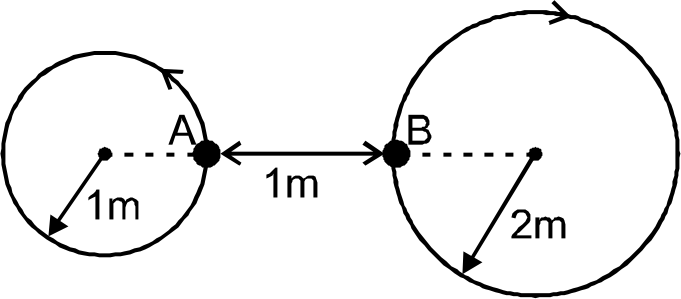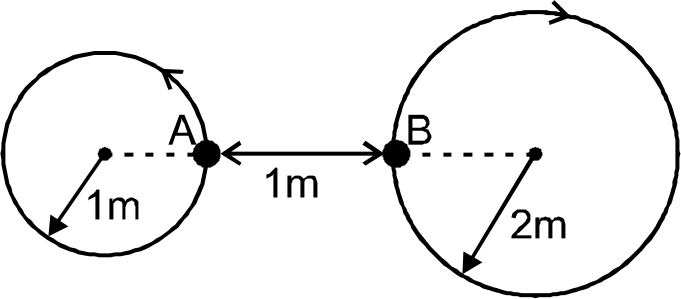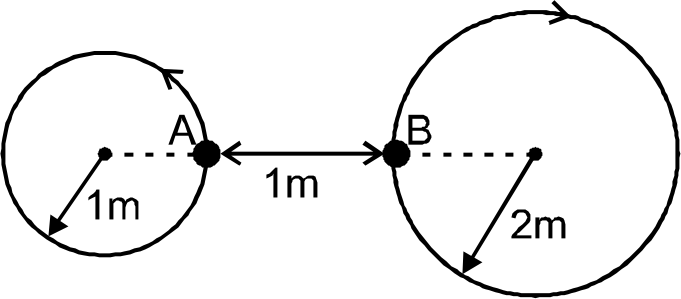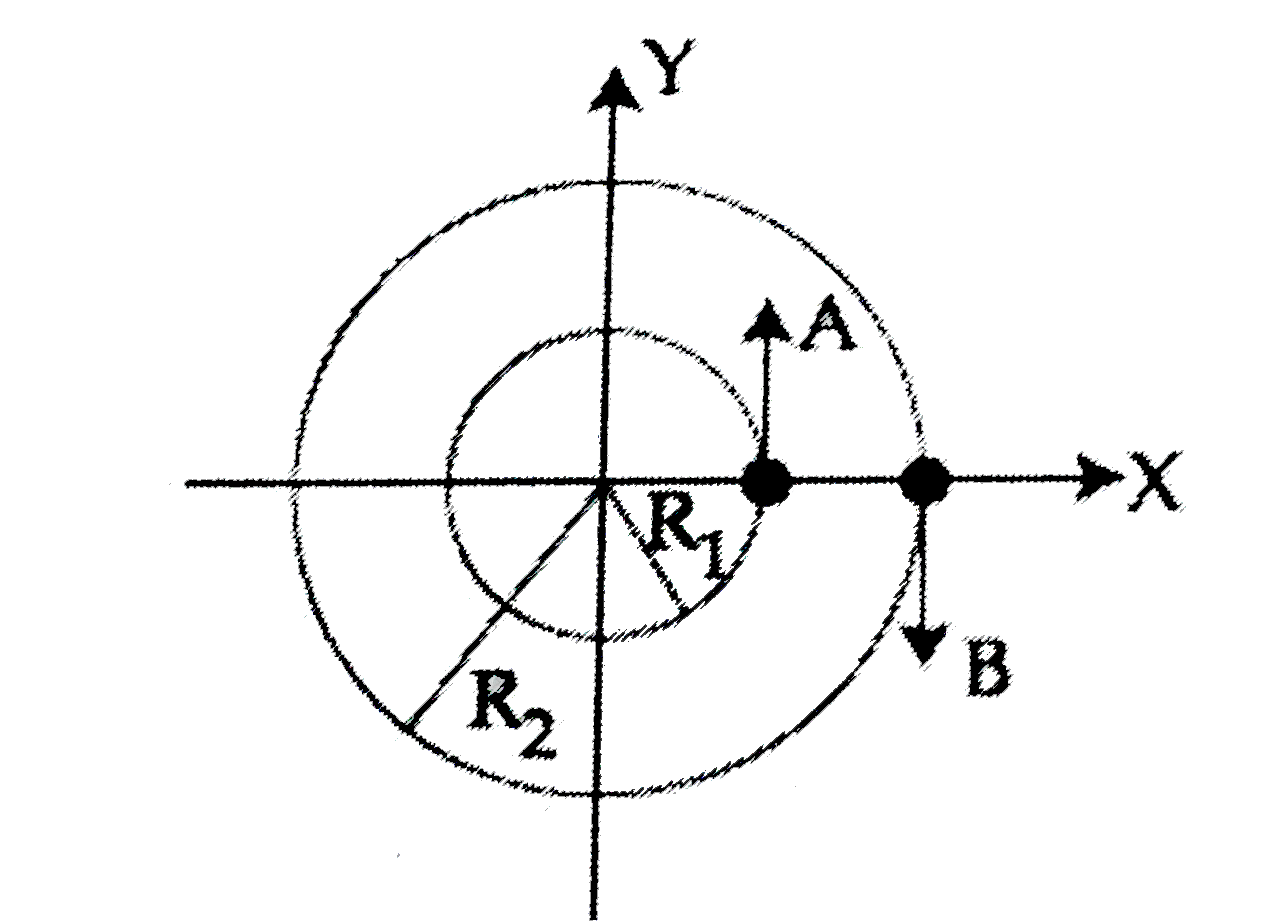Two particles are moving in different circles in same plane with different angular velocities as shown in figure. At t = 0, initial positions of particles A and B are shown by dots on the respective circles. Initial distance between particles is 1m. Particle A move anticlockwise in the first circle whereas B moves clockwise in the second circle. Angle described (rotated) by A and B in time 't' are θA=(π2t) and θB=(πt) respectively. here θ is in radian and t is in second. Radius of each circle is shown in diagram.

At time t=1 sec. the magnitude of acceleration of A with respect to B is
A
π24√65ms2
B
π22√7ms2
C
π23√15ms2
D
π24√7ms2
Video Solution
Text Solution
At time t=1 sec
→aB=ω22r2(−ˆi)=2π2(−ˆi)
→aA−→aB=π24(−ˆj)+2π2(ˆi)
arelπ2[116+4]1/2=π24√65ms2
|
Topper's Solved these Questions
Similar Questions
Knowledge Check
Two particles are moving in different circles in same plane with different angular velocities as shown in figure. At t = 0, initial positions of particles A and B are shown by dots on the respective circles. Initial distance between particles is 1m. Particle A move anticlockwise in the first circle whereas B moves clockwise in the second circle. Angle described (rotated) by A and B in time 't' are θA=(π2t) and θB=(πt) respectively. here θ is in radian and t is in second. Radius of each circle is shown in diagram.

Find the magnitude of acceleration of A at t=1 secAπ23m/sBπ27Cπ24DNone of theseTwo particles are moving in different circles in same plane with different angular velocities as shown in figure. At t = 0, initial positions of particles A and B are shown by dots on the respective circles. Initial distance between particles is 1m. Particle A move anticlockwise in the first circle whereas B moves clockwise in the second circle. Angle described (rotated) by A and B in time 't' are θA=(π2t) and θB=(πt) respectively. here θ is in radian and t is in second. Radius of each circle is shown in diagram.

At time t=2 second, the angular velocity of the particle A with respect to the particle B isA5π rad/secB3π2 rad/secC2π3 rad/secD5π6 rad/secA particle moving in a verticle circle its
Akinetic energy is constantBpotential energy is constantCneither K.E nor P.E. constantDboth kinetic energy and potential energy constant
For a particle moving in vertical circle, the total energy at different positions along the path
View SolutionTwo particles A,B are moving on two concentric circles of radii R1) and R2 with equal angular speed ω. Att=0,their positions and direction fo motion are shown in the figure :

View SolutionTwo particles A,B are moving on two concentric circles of radii R1) and R2 with equal angular speed ω. Att=0,their positions and direction fo motion are shown in the figure :

View SolutionA particle is moving in a circle:
View SolutionA particle is moving in a circle with a constant speed. Its moving is
View Solution


